A Q and A with Amy Cichanowski, Executive Director of the Minnesota Youth Ski League, on developing a more robust, diverse, ski community from the bottom-up.
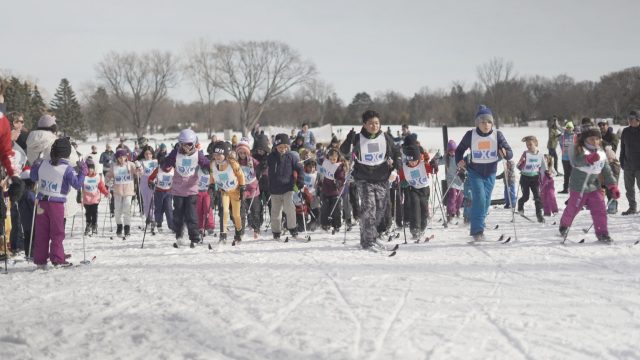
The State of Minnesota has always been good at getting its citizens on skis. Throughout the last century, people with names – some of them specific – Grace Carter Lindley, George Hovland, and Charlie Banks – and others more of a metonym for a kind of spirit – Ole and Lena, helped cut countless networks of Nordic ski trails through the state’s forested hills, and turned the “Land of 10,000 Lakes” into a land of about just as many cross-country skiers (all crammed onto a man-made loop at Theodore Wirth Park, presumably).
Nowadays, that skiing tradition has an organization dedicated to the mission, the Minnesota Youth Ski League (MyXC), and they are good at getting the state’s youngest citizens to take their first strides.
In 2018, youth skier participation for MyXC stood at 2,000 across over 50 clubs stretching from the Twin Cities outward across Minnesota, Wisconsin, and the Upper Peninsula of Michigan. Four years later in 2022, MyXC had 4,000 youth skiers. In just 4 years, the number of MyXC youth skiers doubled.
That stark figure is a concrete piece of evidence to put to the impressions that us skiers from across the country have had the last few years – the little interactions in trailhead parking lots, chalets, and on trails that make you think ‘it seems like it’s gotten busier out here.’
Simply put, cross-country skiing in the United States is growing. And, as the MyXC statistic shows, those involved with that growth are also in the process of creating a more robust and focused development system. At one end of that system, the sport’s development has looked like unprecedented achievements for the United States on the international stage. World Cup titles, Olympic medals, and the greater proliferation of domestic pro-level programs making way for more top-level skiers to ski race. In other words, the types of US skiing developments and results that we usually report on here at FasterSkier.
But what about the other end of the development system? How are those that first get skiers striding and gliding viewing their roles in the larger picture of U.S. skiing as it grows and takes in more communities and people?
There are few better people to paint that picture than Amy Cichanowski. Behind the statistics about MyXC doubling in size in the past four years has been her steady hand in leadership as the MyXC Executive Director. In fact, she’s been behind everything at MyXC in that position long before its recent explosion, going back to 2005. And before she got to MyXC, she saw every other part of American skiing. First as a youth skier in the Mississippi River town of Winona, Minnesota, then as a collegiate skier at Middlebury College, then as an international-level marathon skier, and finally as a coach in the Minnesota high school league.
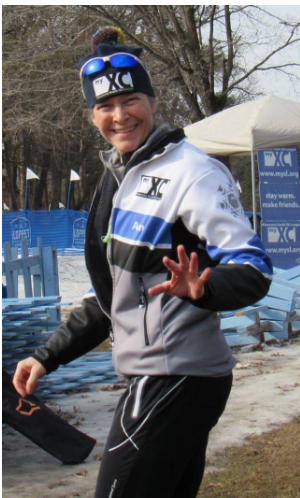
Her wealth of experience shines through immediately when you talk to her about skiing. She is deeply thoughtful about both what is driving growth in Nordic skiing and how the sport can most effectively leverage that growth into competitive development at the highest level. The key theme, constant in Cichanowski’s reflections, is that sport development is a holistic throughline from the youth level and on all the way to the World Cup. That’s a philosophy that comes with a personification in the case of MyXC. Cichanowski can point to one of the league’s alumni; Jessie Diggins.
In fact when I asked Cichanowski what contributed to MyXC participation doubling since 2018, she pointed to that year as the moment that Minnesota looked at one of its own winning a gold medal and was inspired to get out on skis. On the line graph charting MyXC participation over the years, 2018 is when things started to point sharply upwards.
Four years later, Diggins’ Olympic medal total is now three, and in Minnesota, she has reached a status heretofore occupied by perhaps only Prince and Paul Molitor. Diggins is one of the best at what she does and does it in a way that no one has before…and she’s unabashedly Minnesotan. That’s enough to get her in the Minneapolis Star Tribune regularly, and inspire plenty of kids out onto skis too.
Add in a pandemic that pushed more to look outside for respite, and Cichanowski has seen daydreams about what might kickstart skiing in the U.S. become reality…and a set of new challenges for her and others like her working at giving every kid a chance to ski. In an interview with FasterSkier, she goes in-depth on developing a model that works sustainably as the sport grows, creating a more focused pathway for skiers who want to be competitive, and making the sport of cross-country skiing a welcoming space for more people from more diverse backgrounds.
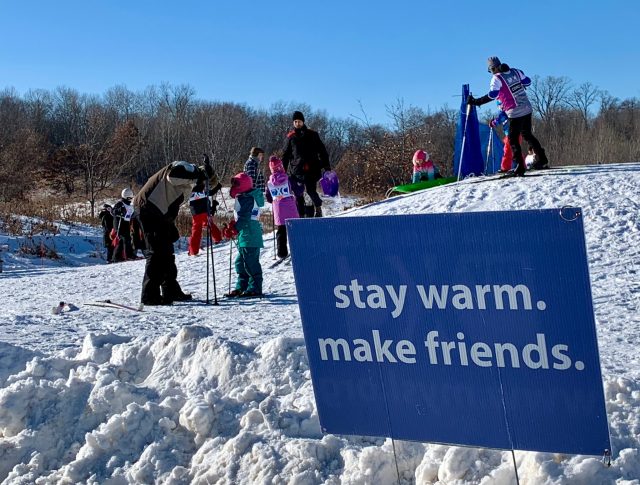
This interview has been edited for length and clarity.
Ben Theyerl/FasterSkier (FS): To start, can you go over the basics of what the Minnesota Youth Ski League (MyXC) does as an organization?
Amy Cichanowski (AC): Our main programming is a learn-to-ski program designed to get youth from pre-K through when they would join a competitive club (about age 12-13) into cross-country skiing. Our mission is to create a club culture for youth skiing powered by volunteers and parents, and we do that by providing the basic framework – a kind of “club-in-a-box” – that has been implemented in communities across Minnesota, Wisconsin, and Michigan. What’s included in that is everything: insurance, registration, curriculum (which was recently turned into an app this year), volunteer training and suggested roles that are needed to keep a club running smoothly.
FS: Practically speaking then, what does that look like if I were going to sign up for a MyXC club?
AC: This year we had 4,000 kids registered in 57 clubs across the Midwest. What the ski community you’re joining might look like could be anything from Como park here in Minneapolis, which is very much one part of many, many clubs in the Twin Cities, or you could be in Eau Claire (the author’s home club, which was in the past a MyXC youth program) where our programming acts as the youth-side programming for a specific ski community, or in one of the Iron Range towns we have, where it’s a super small community but nearly everyone in the greater community touches the ski community.
In each case, our main learn-to-ski program is called SkiSparks and we meet once-a-week for eight weeks – typically on weekends in January or February. The main volunteer “job” that we have is coaching, and on that I’d say we’re at about 80% parents and 20% members of the community that either had kids go through the program at some point or are skiers who want to give back to the sport through their involvement.
In Ski Sparks we have a week-to-week curriculum that will essentially allow a coach to pick up the group they’re working with on any given week and provide a framework for what they should teach that week. It’s a total skill development program designed in line with US Ski and Snowboard guidelines and based off of what we know has worked in our 30 years tweaking things.
FS: That’s been a successful model. You mention that MyXC is at 4,000 participants as of last year. My understanding is that figure is almost exactly double what it was in 2018. What does that actually look like in practice? Has your club model held up under such intense growth in numbers?
AC: In practice, I’d say what you see is still very much in line with that diversity in terms of the communities our clubs are in. You might not know there’s been explosive growth if you were to show up to one of our smaller clubs that’s had steady enrollment of a dozen or so kids for nearly 20 years. And the same case, if you showed up to our largest club at Mt. Itasca in Grand Rapids, Minnesota, they’ve consistently had about 160 kids in their program for years. You really only see the growth when you aggregate our clubs across the board. It’s a few more kids participating in every club, and more clubs starting in more communities. Put that together and suddenly the demand for volunteers and equipment starts to look quite dramatic, and that’s what the growth has been – dramatic.
You’ll probably ask, well what’s fueling that? And it’s a question we’re constantly speculating on because it’s great growth, but understanding why part of understanding is ‘ok, what do people see in cross-country skiing that makes them want to do it, and how do we make sure we’re providing that.’ So, I think the two big reasons that we’ve come back to are 1) COVID in the past two years, and 2) Jessie Diggins’ success and specifically the position she holds in Minnesota as a role model.
You mention that we’ve doubled participation in the last four years, and really, four years ago – 2018 with the Olympics and Jessie’s gold medal and a good winter here – is right when we saw this big spike in registration. The next winter in 2019 we saw 35% growth which was almost uncontrollable. Then we set a goal to limit the growth to 20% so it would be sustainable. We started capping club registration at 100 [participants] at newer clubs. We hit that goal, but then COVID came around and it fueled another wave of huge growth. Last year, we were back at about 30% from the previous year, and now suddenly it’s another Olympic cycle this year and Jessie is out there inspiring a whole new round of families and kids to get into the sport. It’s those two factors coming together – the best two impulses you could ever hope for, right? A uniquely inspiring individual who’s a skier from Minnesota and a pandemic that made people cherish the time they have in the outdoors – but woah it’s come on fast for us. We’ll see what things look like this year for registration, but I only see us growing again.
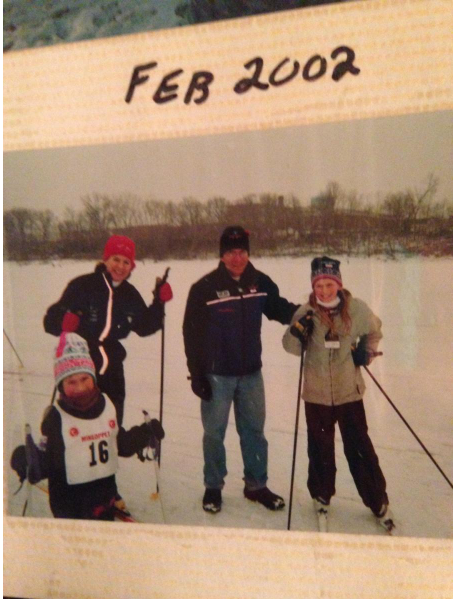
FS: I know you’ve been the Executive Director of MyXC for a long time now. Is this a unique period of growth, and if so, what does it look like to adapt your position to a whole new reality in terms of interest in the sport of cross-country skiing?
AC: It’s completely new growth. When I started with MyXC this position was a very, very part-time job. And now it’s a full-time job for myself, another staffer, and hopefully soon another person. The big thing is as an organization, we’ve had to very quickly adapt to putting in the backend investment to allow our clubs to continue to run as they have throughout our existence. We simply can’t spend as much time providing club assistance and guidance to get things off and running and keep up with the growth that we’re seeing. So what we’ve shifted to is making sure our club management and registration systems are all online, accessible, and easy to operate as possible. I really felt like the upper limit we could hit a few years ago for kids in our system was somewhere around 1,500, and through a lot of dedicated people and shifting our focus to creating systems for families who want to get involved in the sport, we’ve been able to keep up somehow.
FS: Do you find that there’s a big barrier to taking a new adult skier and asking them to get involved in teaching a youth program? Or is that a relatively seamless step?
AC: I wouldn’t call it painless, but we put a lot of work into reducing barriers to entry for kids and their families alike. An experienced adult doesn’t always correlate with being able to engage a new skier who is literally taking their first strides. A lot of times those super experienced skiers are to a point where they can’t remember what exactly it was that made the act of striding on skis tick with them, because they’re so far beyond those tips and tricks you need when you start skiing.
We’ve also tried to pay attention to the barriers to being part of skiing here that might escape your notice if you’ve been in it for a long time; sport education, if you will. Jessie Diggins is an alumnus of our program, and for many who saw her skiing at the Olympics, they don’t know how or when or where to watch/read about her and the rest of the US skiers on the World Cup when the Olympics aren’t on NBC. Or like, navigating the world of trail passes, which get super confusing in the Twin Cities here because you have to have a different pass for different trail systems.
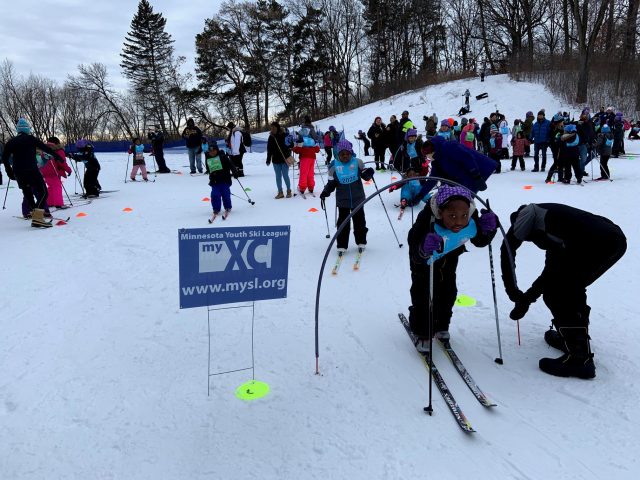
FS: Your youth club programs oftentimes end with skiers ‘graduating’ to competitive clubs. I’m curious what your perspective is on how you most effectively build that bridge?
AC: I think one of the biggest changes in my time as Executive Director at MyXC is we’ve come up with a program to target that “bridge” you’re talking about called Skiwerx. Before, we just had our program up to ten years old or so, and now we’ve made a program that meets more often and introduces some notion of competitiveness to skiing. As people may or may not be aware we’re in a unique place in Minnesota where high school skiing is a huge thing and in nearly every community our clubs in the state are in, but we have a weird overlap where “high school” skiers can start competing for their school in 7th grade, or 12-13 years old. Which means we have overlap between our program and the high school league, where some skiers drop out completely of MyXC at age 12, but some are in Skiwerx until 14. Because of the unique situation in Minnesota with high school racing, up until ten years ago there really weren’t proper youth races here. The Skiwerx program was important to develop because without it, we had big losses in the gap between our programming and high school racing.
The other thing about the high school league is they only race 5-kilometer races all season. That meant without any preparation below the U16 level, when our kids were in an age group where they can qualify for Junior Nationals, they hadn’t had any exposure to the types of races that they needed to be racing at a high level, like sprinting. We now have a real ramp up to that age group with U12 and U14 races that are in line with the developmental pipeline that racers follow in the U.S. Ski and Snowboard, and eventually Collegiate, SuperTour, and maybe even World Cup level. Kids ultimately have the final say in the direction that they go with skiing. Do we have plenty who don’t ever race in our youth programs? Yes, of course. But we didn’t have a step for those that would eventually race before, and that’s been something I’m proud we’ve put in place to give kids that option.

FS: In that ten year span you’re talking about where this has developed, there’s also been a lot of growth in the club-side of competitive skiing in Minnesota. Whereas fifteen years ago, it was totally geared towards the high school league, there’s now a whole other side of year-round club programs that have taken off in the state and region. Would you say the programming you’ve introduced is designed to accommodate that?
AC: Yeah, I would say that. Most of our kids still end up skiing for their high school team at school and not touching club skiing. I think that’s a feature of Minnesota skiing we don’t want to lose, the option to do it on your own terms. But again, there was a need to make sure we have the developmental options in place so that skiers here can take the sport as far as they want to, and I like that.
Ultimately, my favorite sort of sport development is not the kid who comes from a skiing family that’s ready and reeling to race the U14 races, but those kids that come from a non-skiing family, see that they can race, and are drawn to it. Maybe that leads to them being varsity high school athletes. Maybe it leads to them skiing in college or beyond. Maybe it gets their parent who knew nothing about the sport five years ago into it and doing the Birkie. Those are real success stories – creating a ski family that would have never been otherwise.
FS: You have already touched on this, but MyXC is working in communities that are pretty different in terms of size and demographics. What’s been the approach to create a system that works in all types of communities in the Midwest?
AC: I think a lot of it is being able to tie our program to the existing ski culture in an area. One of the things that’s required when you have 4,000 kids out a year is that you learn from people and clubs and try to integrate it into what you’re doing. I’m really proud of the work we’ve been doing focusing on diversity and growing the population of BIPOC skiers in the Midwest. To do that we have to go beyond word-of-mouth recruitment if we actually want to attract new communities that haven’t been involved in the sport before.
FS: I wanted to talk about that initiative. Along with the growth you’ve seen in the past few years, there’s been a concentrated effort to make sure that the more skiers are coming into the sport, the more diversity of skiers are coming into the sport. What are some of the modes of outreach you’ve seen work?
AC: Our club model turns out to be one of our biggest strengths in doing outreach. When you have 57 clubs, all of those are going to have volunteers, and oftentimes, they come with unique perspectives that we wouldn’t have if we were setting up a club there ourselves. One way of harnessing that is we’ve tried to add an Outreach Coordinator into the club model we send out. That way, someone in the community that club is in can leverage their knowledge, focus, and passion to help make a difference in getting all people involved in the skiing community. That ends up being done in schools, in community centers, or in neighborhoods.
Meanwhile, we’ve tried to make sure that when we do have new members from new communities get involved in the sport, they feel like they can do so on their own terms. Last year, we put effort into translating our curriculum materials into Spanish and will probably do so with more languages that reflect the diversity of our region (Minnesota is home to some of America’s largest Hmong, Vietnamese, and Somali communities).
In reality though, expanding the sport is a lot of footwork. Our next full-time hire will be an Outreach and Event Coordinator because this is something that takes constant effort and maintenance to keep connections going. That’s something we learned when we really started pursuing this a couple years ago – it’s never a one-time thing you can do. You have to be persistent. The results – last year when we grew 30% overall, our BIPOC percentage increased 31%. We’re now just under 15% in the league for BIPOC, and we’d like to keep increasing that.
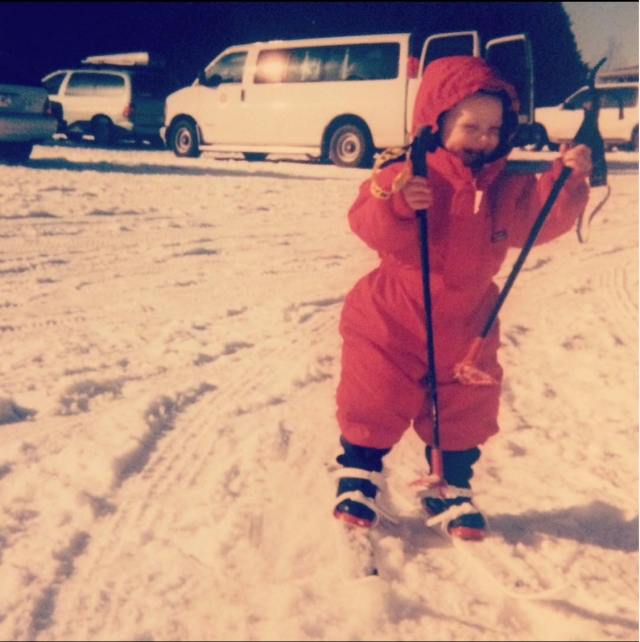
Ben Theyerl
Ben Theyerl was born into a family now three-generations into nordic ski racing in the US. He grew up skiing for Chippewa Valley Nordic in his native Eau Claire, Wisconsin, before spending four years racing for Colby College in Maine. He currently mixes writing and skiing while based out of Crested Butte, CO, where he coaches the best group of high schoolers one could hope to find.



